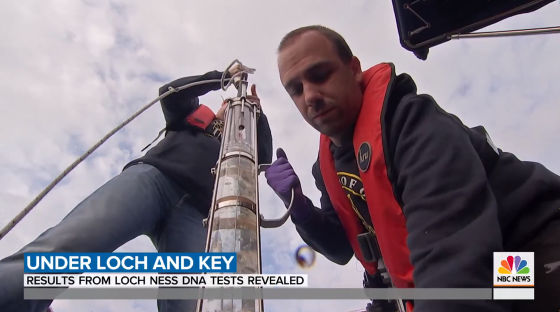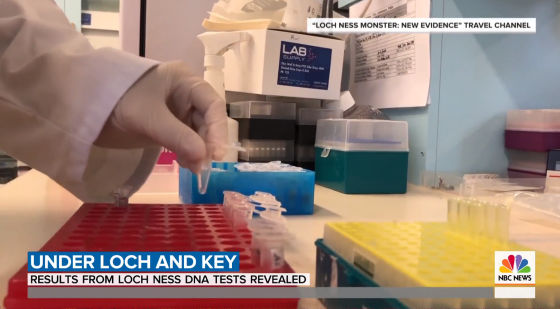The result of investigating Nessie's identity by the world's largest DNA analysis will be announced

The Results — Super Natural History
https://www.lochnesshunters.com/the-results
Loch Ness monster could be a giant eel, say scientists | Science | The Guardian
https://www.theguardian.com/science/2019/sep/05/loch-ness-monster-could-be-a-giant-eel-say-scientists
Loch Ness monster could be giant eel, most extensive study of lake ever undertaken suggests | The Independent
https://www.independent.co.uk/news/science/loch-ness-monster-solved-photos-sightings-scotland-eel-dna-a9092716.html
Nessie's oldest record dates back to 565 AD. In recent years, the 'Surgeon's Photograph' published in April 1934 has attracted a great deal of attention, and even though it was later revealed that the photo was a joke, many people still believe in eyewitness testimony and its existence.
In 2018, a research team led by Professor Neil Gemmell , a geneticist at the University of Otago, New Zealand, decided to investigate the environmental DNA of Loch Ness.
The cells of an organism contain DNA that is unique to the organism, but the tissue fragments of the organism are excreted from the body by being peeled off by metabolism or attached to excrement. Since the water of lakes and rivers contains tissue fragments that have been peeled off from such organisms, DNA sequencing will make it possible to identify the organisms that live near the water. Professor Gemmell's work is one of the largest DNA studies of its kind, with 250 DNA samples taken from various locations and depths on Loch Ness.

As a result of the investigation, it was found that about 3000 species of creatures live around Loch Ness, Scotland.
In addition to very small organisms in the DNA, but human-pig, deer, needle fish found, huge crocodiles and, are ancient fish

According to Professor Gemmell, the amount of DNA in eels on Loch Ness was enormous, and the research team was surprised. However, at the time of writing the article, there was no distinction between the detected DNA of normal eels and that of giant eels.

However, there have been no reports of giant eels being found on Loch Ness, and the giant eels reported in Europe weigh up to 5.38 kg, not as huge as Nessie. Professor Gemmell admits this point, but said, 'The accumulated evidence does not rule out the possibility that Nessie is a giant eel.'
The identity of the Loch Ness monster is
However, 20% of the DNA samples are still undeciphered, and not all of them have been clarified in this study.

Professor Gemmell's research will be published on the Travel Channel on September 15, 2019 as a documentary called 'Loch Ness New Evidence.' You can check the trailer below.
Our new #documentary Loch Ness Monster: New Evidence follows the work of geneticist @ProfGemmell as he uses cutting edge technology to shine a new light on the centuries-old mystery. #LochNessNewEvidence premieres on @TravelChannel Sunday, Sept 15, at 8 pm ET / PT. #LochNessHunters pic.twitter.com/CjZZPmpvaA
— 1895 Films (@ 1895Films) September 5, 2019
Related Posts:







